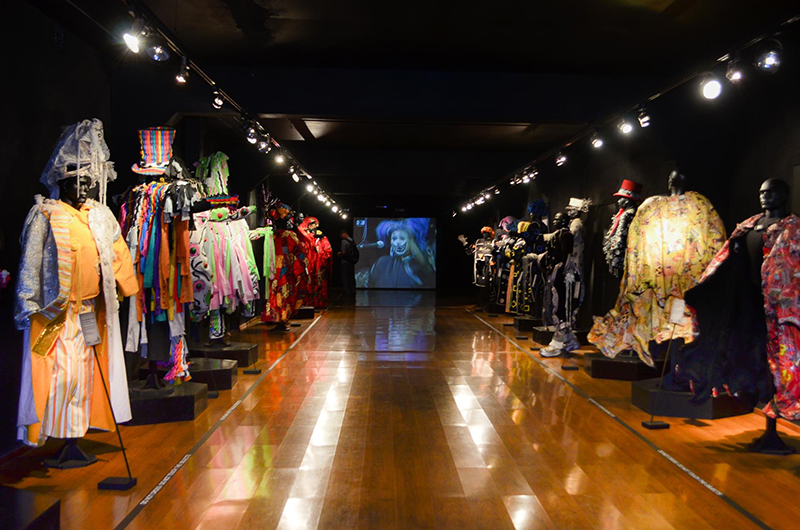

Montevideo. Credit: vale_t and iStock
Uruguay may be small in size, but this cultural gem has a lot to offer. Sandwiched between Brazil and Argentina, the verdant nation is home to pristine beaches, grand art-deco- and colonial-style homes and a lush interior that’s ripe for exploration.
Whether you’re into lying on the sand with a novel, dancing until the sun rises or diving into extreme sports, Uruguay is a destination for it all.
Stroll Along the Rambla
Boasting a stunning coastline facing Rio de la Plata and the Atlantic Ocean, Uruguay’s waterfront is full of things to see and do. Montevideo, the capital city, has one of the longest ramblas (promenades) in the world, where you can enjoy a scenic walk, run or quality people-watching on sunny days.
Along the way, you’ll find all manner of shops and eateries on the city side of the esplanade. Building regulations prohibit structures on the seaside, so you’ll always have a stunning ocean view.
Other Uruguayan cities have beautiful ramblas, too, including Piriápolis and Punta del Este.
https://www.instagram.com/p/Bi73-phns-d/?taken-by=uruguaynaturaltv
Find the Beef
Though vegetarians can certainly navigate the country’s culinary scene just fine, you’d be remiss not to try Uruguay’s traditional flame-grilled specialties. Most classic dishes here involve meat, namely asado (beef roasted over fire). Think of it as South American barbecue.
Another top choice is chivito, a beef sandwich topped with fried egg, vegetables, olives, cheese and almost anything else you can think of.
For dessert, try anything with dulce de leche — it’ll become your new obsession.
Attend a Soccer Match
Even if you’re a not soccer fan, you probably know how passionate Uruguayans are for this sport. Either way, attending a match is a must when visiting this South American country.
A word to the wise: you may want to skip any match between Nacional and Peñarol, the country’s main national teams, as tensions tend to heat up during this rivalry.
Definitely plan a stop at Estadio Centenario in Montevideo, which was built for the first World Cup in 1930. It is also the home of Museo del Fútbol, a museum that walks you through the sport’s history.

Museo del Carnaval. Credit: Museo del Carnaval
Wander Through a Time Capsule
Uruguay’s history is rich, and some streets still retain a colonial-era vibe. Ciudad Vieja, Montevideo’s oldest neighborhood, is full of museums and historic buildings, such as the neo-Gothic Palacio Salvo, the Teatro Solís (a theater) and Museo del Carnaval (Carnival Museum).
Colonia del Sacramento is one of the country’s oldest cities, founded as a Portuguese settlement in the 17th century. Walking its streets feels like traveling through time.
Experience Slow Living
Colonia del Sacramento is one of Uruguay’s oldest cities, founded as a Portuguese settlement in the 17th century. Walking its streets feels like traveling through time.
In most Uruguayan cities, locals live at a leisurely pace and it’s common for shops to close after lunch so people can take a nap. You should not only keep this in mind during your visit, but you should embrace the easygoing flow with your own midday rest session.
Of course, in Montevideo, you’ll find the same bustle as you would in any other cosmopolitan city, just on a much smaller scale.
Try Mate
Practically the national drink of Uruguay, mate is essentially a highly caffeinated tea made from an indigenous herb called yerba mate.
Drunk out of a traditional wooden vessel (also called mate) through a metal straw (bombilla), mate is as much a social experience as it is a culinary one. Locals sip it while they work, study, lie on the beach, watch TV or hang out with friends and family.
https://www.instagram.com/p/BDyrBY9gPgu/?taken-by=uruguaynaturaltv
Visit Punta del Este
To many, Punta del Este seems like the South American equivalent of the French Riviera. This beach resort town offers several tempting attractions, including a marina, where some of the most luxurious ships in the world arrive every summer; top-notch shopping; phenomenal restaurants (like the beachfront La Huella — actually located in José Ignacio, next to Punta del Este — and French fine-dining venue La Bourgogne); and, of course, stunning beaches with white sand and turquoise waters.
Stay in Cabo Polonio
Enjoy a digital detox in the charming town of Cabo Polonio, so remote it has no electricity, roads leading to it or running water.
During winter, the place may look like a ghost town, but as soon as summer begins, it’s almost impossible to find accommodations. Laze your days away on the unspoiled beach and spend your nights gazing at more stars than you could imagine, thanks to the lack of artificial lighting.
https://www.instagram.com/p/BfFJ2rJHxCC/?taken-by=uruguaynaturaltv
Party during Carnival
Even if you’ve experienced the world-famous celebration in Rio, you won’t want to miss Uruguay’s version. For one, this iteration is the longest such festival in the world, raging for 40 consecutive nights from mid-January to early March.
This Carnival is a wonderfully chaotic melting pot of cultures, with a strong African influence. Listen for the sounds of candombe, a uniquely Uruguayan style of street performance featuring highly skilled bands of drummers and dancers.
There’s good reason that nearly 90 percent of the country comes out to participate in the revelry — with myriad floats, balloons, masks and costumes of every color, Carnival is a celebration worthy of any bucket list.
Celebrate Like a Local
Uruguay’s nightlife is unlike almost anything you’ve ever experienced. If you like dancing, bar hopping and socializing into the wee hours of the morning, get ready for a great time.
If you’re not a night owl, take a nap and make an effort to stay awake — it’ll be worth it. Locals don’t usually go out for drinks before 11 p.m. and the clubs are not crowded until at least 2 a.m.
The party tends to last until about 7 in the morning, so it might be wise to grab a mate before heading out for the night.
